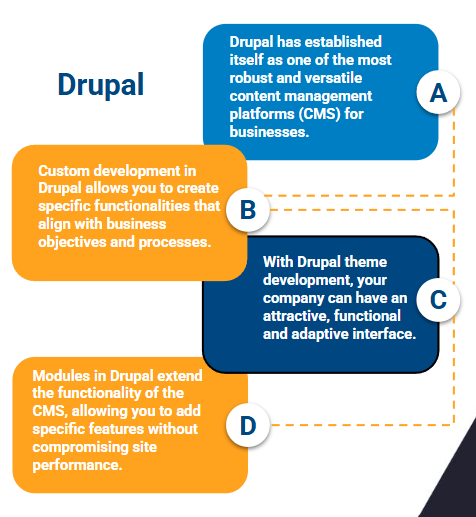

Drupal 10 Antispam Module: Protect Your Website from Spam and Threats
February 21, 2025
Table of contents
Quick Access
In this article, we will explore the best antispam solutions available for Drupal 10, how to implement them, and why it is crucial to protect your website from this growing problem.

Drupal 10 is one of the most robust and flexible content management platforms (CMS) on the market. However, like any website with open forms, forums, or comment sections, it is exposed to the constant threat of spam. Fortunately, there are antispam modules designed specifically for Drupal 10 that allow you to efficiently filter and block unwanted content.
Why is an antispam module important in Drupal 10?
Spam is not only a nuisance for website administrators, but it can also negatively impact a site's online reputation, performance, and security. Some of the top reasons to implement an anti-spam module in Drupal 10 include:
- Bot protection: Many spammers use automated bots to send large amounts of unwanted messages.
- Improving performance: Spam can overload servers and slow down your website.
- Optimizing user experience: A clean, spam-free site improves visitor credibility and trust.
- Compliance: Some privacy and data protection regulations require websites to avoid publishing malicious or spammy content.

Recommended Anti-Spam Modules for Drupal 10
Here are some of the most effective modules for combating spam in Drupal 10:
1. Mollom (Discontinued, but with alternatives)
Mollom was one of the most popular anti-spam modules for Drupal, but it was discontinued in 2018. As an alternative, it is recommended to use Akismet or Antispam by CleanTalk.
2. Antispam by CleanTalk
This module is one of the most advanced solutions for spam protection in Drupal 10. Its features include:
- Automatic filter based on advanced spam detection algorithms.
- Integration without the need for captchas, which improves the user experience.
- Protection against fake registrations, spam comments, and unwanted form submissions.
3. Akismet
Akismet is one of the most well-known tools for combating spam and is widely used in WordPress, but it also has a version compatible with Drupal 10. Its main advantages are:
- Global spam detection database.
- Supports contact forms, comments, and registrations.
- Easy integration with other modules and custom settings.
4. Honeypot
Honeypot is an effective technique that blocks spam bots by adding hidden fields in forms. If a bot tries to fill out these fields, the system detects it and blocks it automatically.
- No user interaction required, avoiding annoying captchas.
- Compatible with most Drupal 10 forms.
- Lightweight and easy to configure.
5. reCAPTCHA
Google reCAPTCHA is another reliable alternative to block automated spam submissions. This module allows integration with reCAPTCHA v2 and v3, offering different levels of security.
- Easy to implement with a Google API key.
- Invisible CAPTCHA options to minimize user friction.
- Robust protection against advanced bots.
- Configure Google reCAPTCHA in Drupal

How to Implement an Antispam Module in Drupal 10
- Install the module: Download and install the module from Drupal.org or using Composer.
composer require drupal/antispam
- Activate the module: Go to the modules section in the Drupal admin panel and enable the chosen antispam module.
- Configure Settings: Depending on the module, you'll need to add an API key, set up filtering rules, or define detection thresholds.
- Test the System: Perform tests by submitting forms or comments to ensure the module is working properly.
- Monitor and Tune: Periodically review spam logs and adjust settings as needed.
Spam is a growing problem for modern websites, and Drupal 10 is no exception. Implementing a proper anti-spam module not only protects your site from unwanted content, but also improves security, performance, and user experience.
If you need help integrating an effective anti-spam system into your Drupal 10 site, our team of web development experts is ready to assist you. Contact us today and protect your site from spam efficiently.
We recommend you on video
Related Blogs

Web and Hybrid Mobile Development for Banking Institutions

How Atlassian is transforming enterprise collaboration with Jira, Confluence and Trello

Guide: Drupal Development Services for Businesses

Using Akismet in Drupal 10: Protect Your Forms from Spam
